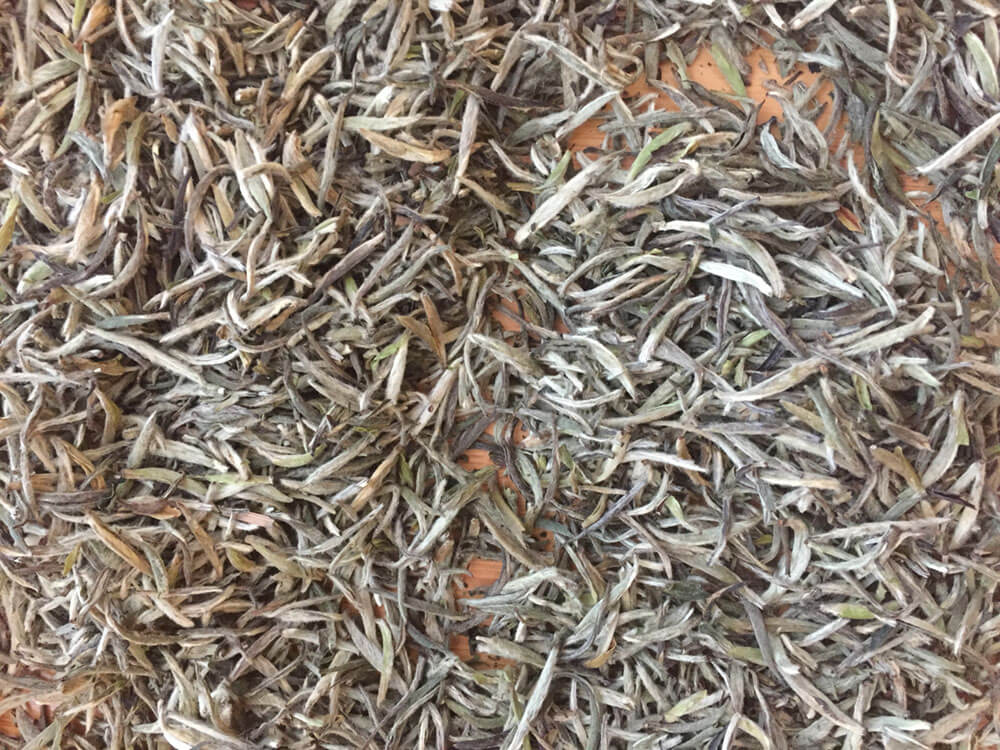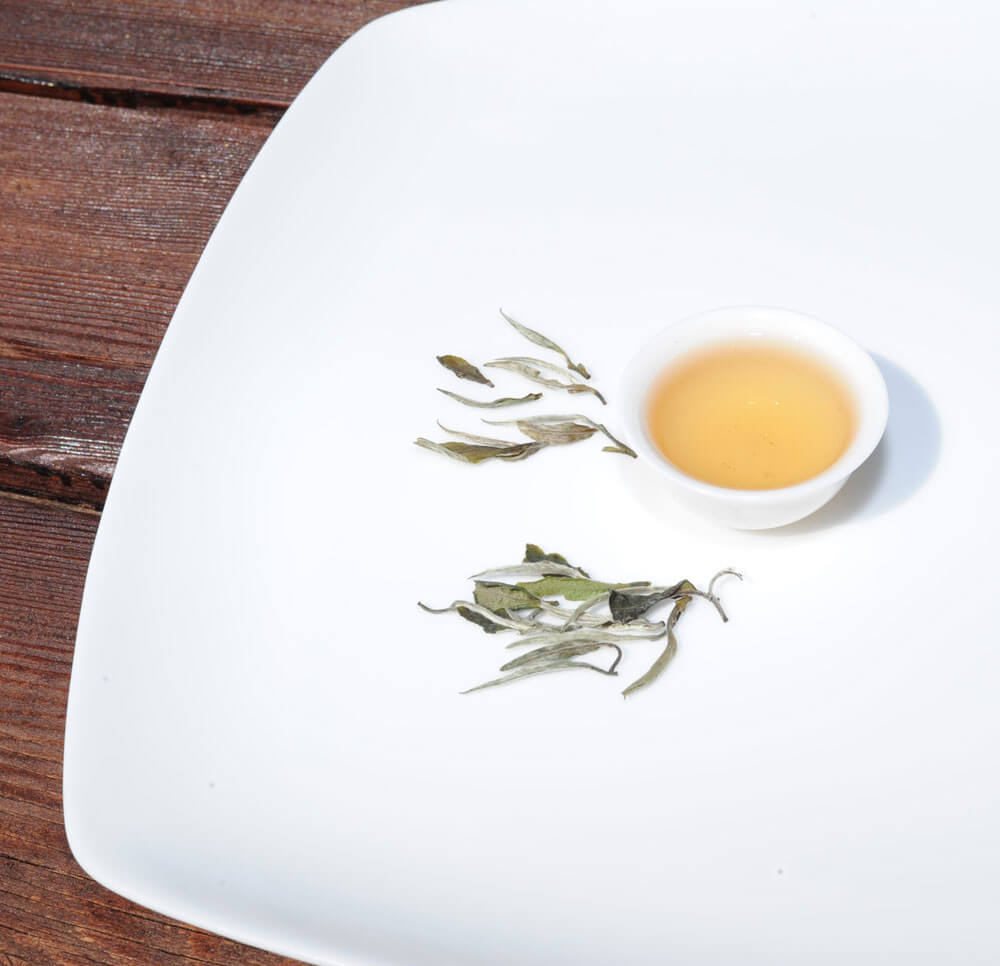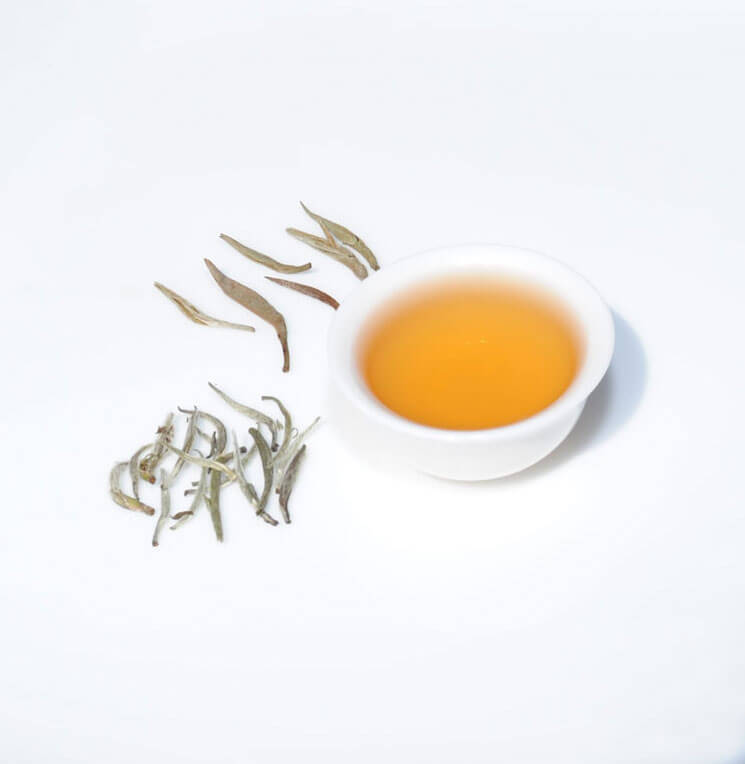What is white tea?
White tea
Few people are familiar with the selection of white tea and that white tea has a limited harvest season. White tea is primarily produced in the Fuding and Zhenghe areas of northern Fujian province in China, but it is also produced in Yunnan in southern China, Nepal, Darjeeling in India, and Sri Lanka.
The claim that white tea is very rare is not correct. White tea refers to a processing method, and in theory, one can make white tea from all kinds of tea leaves. The fact is that specially developed cultivars, such as the “Dai Bai” bush, are used in the production of white tea.
The Dai Bai cultivar produces large buds with many trichomes (protective hairs) on the young shoots. It is these hairs that give white tea its well-known silver color and delicate flavor.
White tea is the closest you can get to the naturally unprocessed leaves. White tea has a limited harvest season, as the leaves can only be picked in early spring, before the buds burst and the leaves unfurl. This makes the tea more costly than, for example, black tea.
The process is very simple: the buds and new delicate leaves are gently hand-picked and laid on trays for several days until they are dry. This is called withering and is the most important step in all tea production. It can take place outdoors or indoors. Indoor withering is often preferred so that humidity can be measured and controlled, and the tea is not exposed to rain.
During the long drying process, the leaves undergo a light oxidation of about 5-10%, which develops the tea’s floral aroma and allows the natural moisture content in the tea to evaporate. The flavor and nutrients are preserved as best as possible under these conditions.
The process also changes the green color of the buds and leaves to a delicate olive green color, and the small white hairs on the leaf buds make the white tea resemble silver needles. Therefore, it is often called Silver Needle. Moreover, only tea from China can be called Silver Needle; elsewhere, it must be referred to as Silver Tips, such as Darjeeling Silver Tips from India.
White tea is a very mild and approachable tea. It has a lovely refreshing aroma with a velvety and slightly floral and fruity flavor.
It is a good tea to drink in connection with or immediately after a meal, and it is also said to be good for the stomach. It contains almost no tannins (the compounds that give tea its slightly sharp and bitter taste), and no matter how long it steeps, it does not become bitter in flavor.
In China, white tea is used to lower body temperature, counteract fluid retention, and stimulate the digestive system. The leaves are known for their antibacterial and anti-inflammatory effects on the body, which is why they are often used in skincare products and facial creams.
White tea is not heat-treated, so all the vitamins are preserved in the buds. Fresh white tea has about three times as many antioxidants as most green teas. White tea is rich in antioxidants, has a very invigorating effect, and provides what is known as alert relaxation, which is due to the amino acid L-theanine.
Simply Tea can offer the perfect introduction to a world of delicate white teas, including Bai Hou Yin Zhen “Silver Needle” and Bai Mu Dan Superior “White Peony.”




